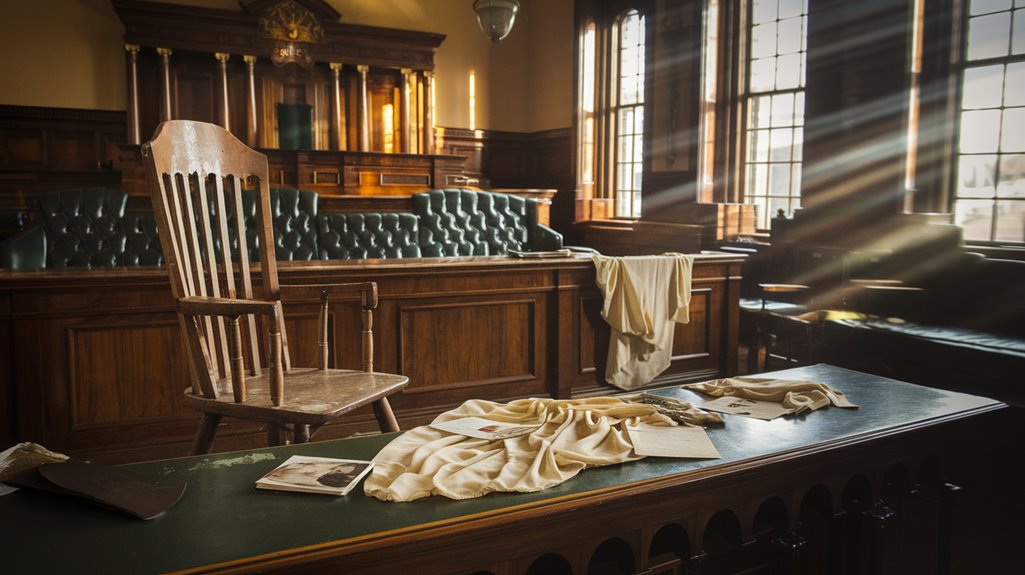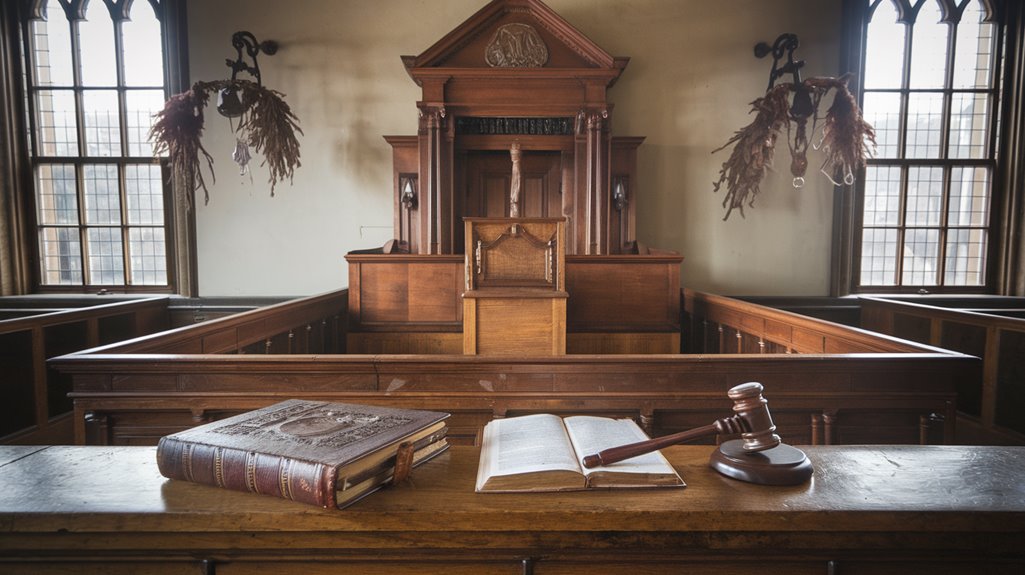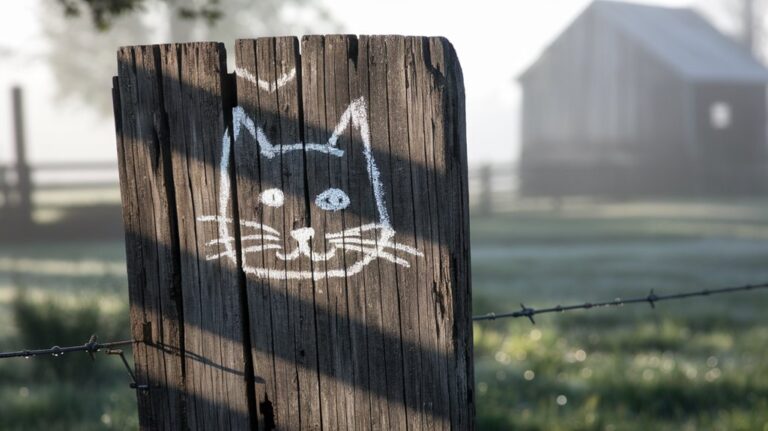Britain’s Last Witch Trial: When Superstition Ruled the Courts
You might be surprised to learn that Britain's last witch trial occurred in the same year as D-Day. While Allied forces were planning their assault on Nazi-occupied Europe, medium Helen Duncan found herself in London's Old Bailey courthouse facing charges under a 209-year-old witchcraft law. Her case wasn't just about séances and spirits – it exposed Britain's struggle between wartime secrecy, ancient superstitions, and modern justice. What unfolds next challenges everything you'd expect from a 20th-century court.
The Strange Case of Helen Duncan
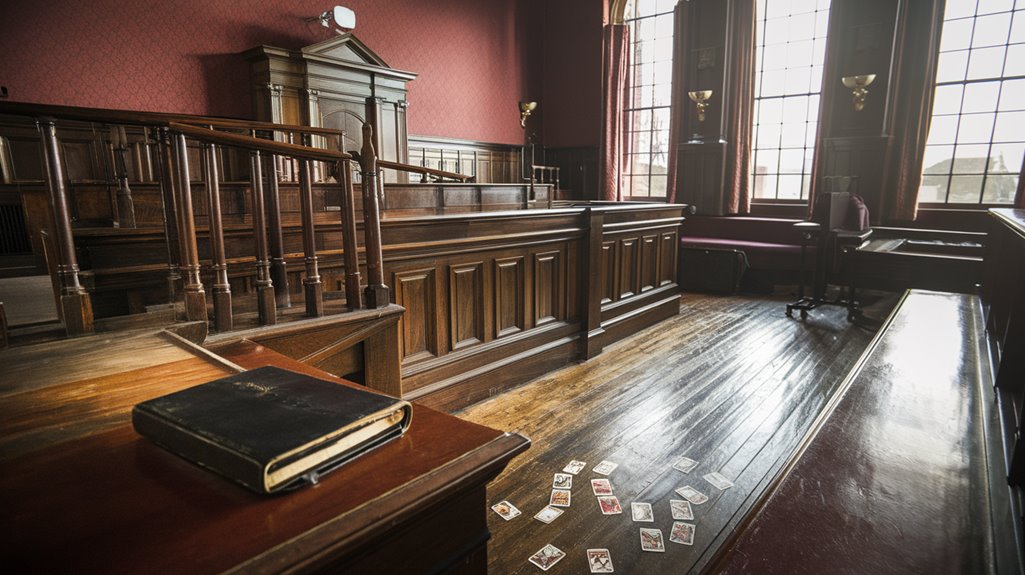
Three remarkable events marked the strange case of Helen Duncan: her rise as Britain's most notorious medium, her historic prosecution under a centuries-old law, and her role in bringing about the end of witch trials in the UK.
You might wonder how this Scottish cabinet-maker's daughter became entangled in one of Britain's most peculiar legal cases.
Duncan's spiritualist practices drew both believers and skeptics as she traveled the country conducting séances. She claimed to produce ectoplasm – a mysterious substance that supposedly emerged from her mouth and transformed into the forms of the dead.
The ectoplasm controversy reached its peak when investigators discovered she'd used cheesecloth and magazine cut-outs to deceive her audiences. Her popularity soared during World War II, with 50,000 séance circles emerging across Britain.
Her wartime activities gained attention when she revealed the sinking of HMS Barham before its official announcement.
In 1944, authorities arrested Duncan during a Portsmouth séance, leading to her trial under the antiquated Witchcraft Act of 1735.
World War II Secrets and Supernatural Claims
Duncan's trial coincided with a remarkable surge in supernatural activity during World War II.
You'll find that wartime spiritualism flourished in Britain, with over 50,000 séance circles emerging as people sought comfort during those dark times.
While the British government worried about classified information leaking through mediums, Nazi occultism was thriving across the Channel.
The Nazis weren't shy about their supernatural pursuits. American soldiers aboard a German U-boat submarine reported unexplained phenomena during their wartime missions.
You might be surprised to learn that Hitler himself consulted a clairvoyant named Erik Jan Hanussen in 1933, and Nazi officials even employed psychics to locate Mussolini after his capture.
One such psychic successfully pinpointed Mussolini's location using a pendulum over a map, demonstrating the extent to which both Axis and Allied powers became entangled with the supernatural during this pivotal period. High-ranking Nazi officials often delayed major military operations based on astrological readings and predictions.
The Old Bailey Trial That Shocked Britain
When Joan Peterson faced trial at London's Old Bailey in 1652, few could have predicted the shocking twists that would unfold. The case highlighted the dark reality of witchcraft accusations and their devastating societal implications in 17th century Britain.
Key aspects that made this trial particularly notable:
- Peterson's own maid and son testified against her
- She was acquitted of bewitching Lady Powell but convicted for Christopher Wilson's case
- The trial featured questionable evidence and political pressure
- Many suspected the proceedings were rigged
- Her execution at Tyburn sparked subsequent court cases
You'll find it fascinating that Peterson's case exemplified the complex gender dynamics and political influences of the era. Much like Jane Kent in 1682, Peterson's fate hinged on the discovery of a suspicious teat on her body.
While elite belief in witchcraft was already waning, public pressure and societal tensions still led to her tragic execution on April 12, 1652.
Like many accused witches of her time, Peterson's situation reflected the broader pattern of social strain theory, where community tensions and poverty often fueled accusations of witchcraft.
Churchill's Response and Public Outcry
Prime Minister Winston Churchill's disdain for the Helen Duncan trial marked a turning point in Britain's legal approach to witchcraft cases.
In a pointed memo to Home Secretary Herbert Morrison, he condemned the proceedings as "obsolete tomfoolery" and questioned the wasteful use of court resources during wartime.
You'll find it interesting that while Churchill himself had an open mind about paranormal phenomena, he couldn't justify the expensive trial that diverted attention from essential wartime matters. The case echoed earlier witch hunts where public fear was exploited for personal gain.
The media sensation surrounding "Hellish Nell," as Duncan was nicknamed, drew mixed reactions from the public. Duncan's earlier conviction for fraud in 1933 had already damaged her credibility with skeptics.
While over 40 witnesses supported her claimed abilities, Churchill's disapproval reflected a growing tension between superstition and rationality in British society.
His criticism ultimately contributed to the Witchcraft Act's repeal in 1951.
Legal Reform and the End of Witchcraft Laws
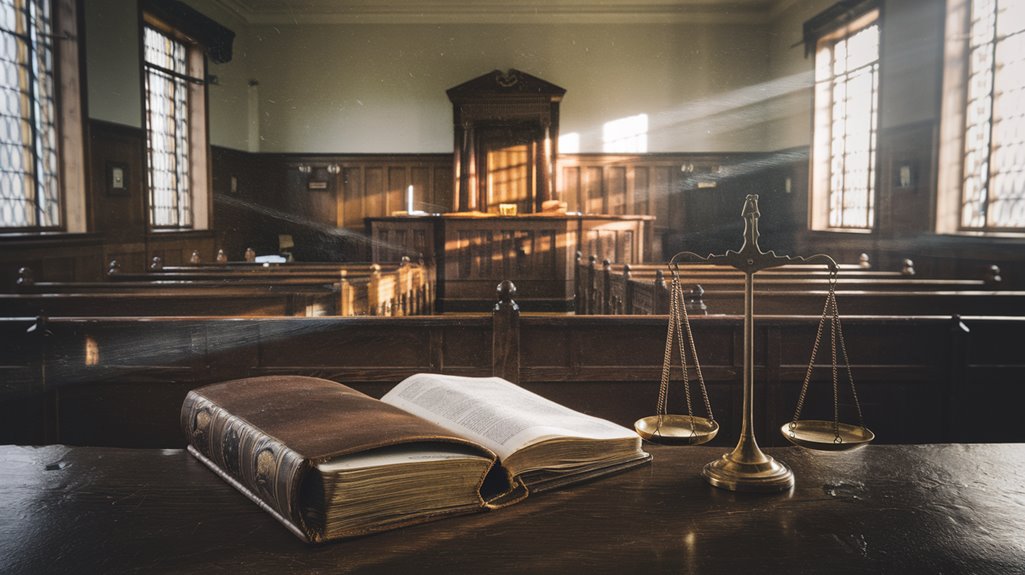
The long road to abolishing Britain's witchcraft laws began centuries before Helen Duncan's trial, tracing back to the deadly Witchcraft Act of 1542.
You'll find that witchcraft legislation evolved dramatically as societal attitudes shifted from fear to skepticism. The Witchcraft Act of 1735 marked a pivotal turning point, treating claims of magical powers as fraud rather than genuine witchcraft. Early colonial America learned harsh lessons about witch trials, as spectral evidence proved dangerously unreliable in court.
The transformative legislation received royal assent in March and would forever change how magical claims were prosecuted.
Key changes in Britain's legal approach included:
- Replacing death penalties with imprisonment
- Moving trials from church courts to civil courts
- Redefining witchcraft as fraudulent behavior
- Establishing evidence-based legal standards
- Protecting consumers from false claims
The reform process culminated in the Fraudulent Mediums Act of 1951, finally repealing centuries-old witch laws.

